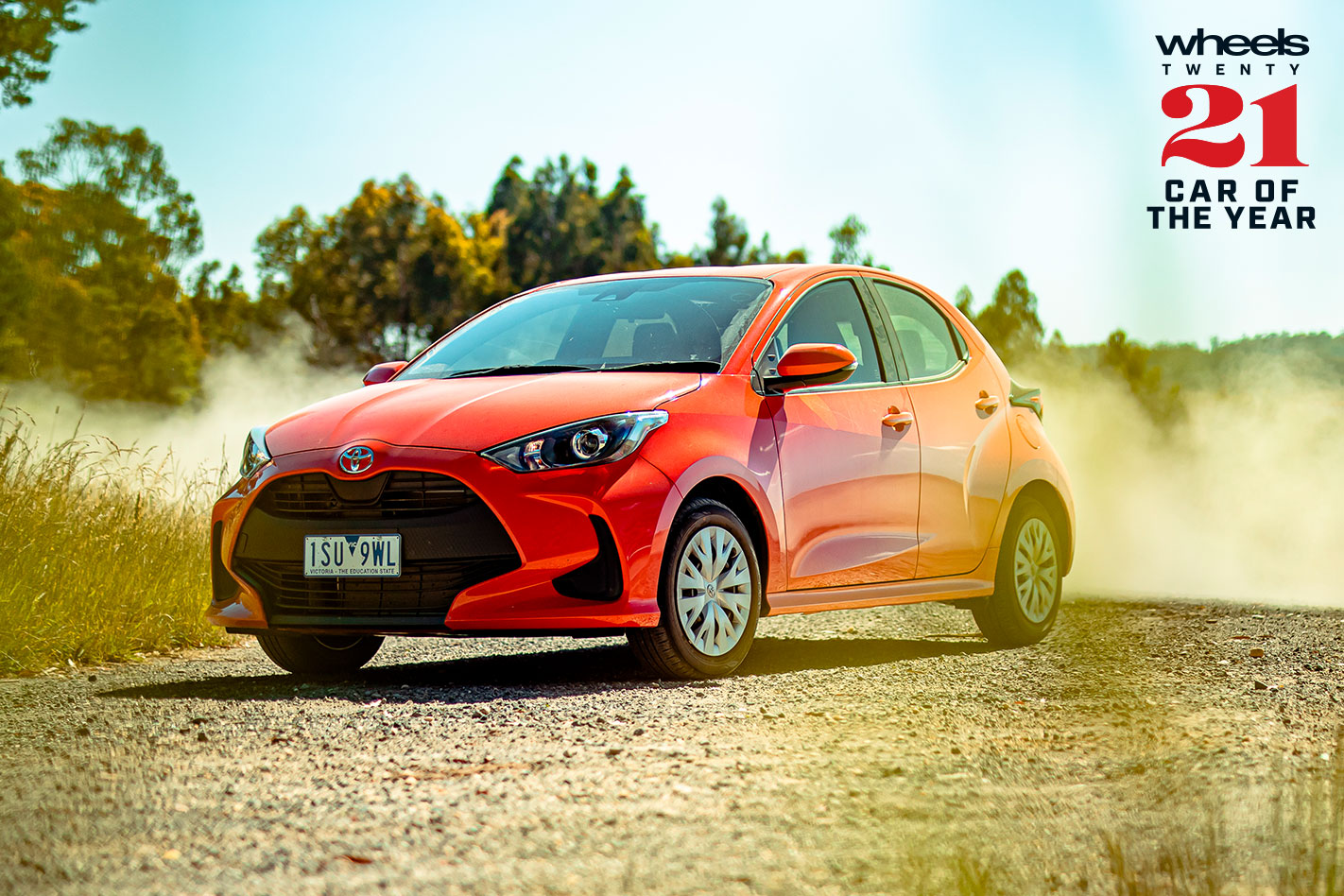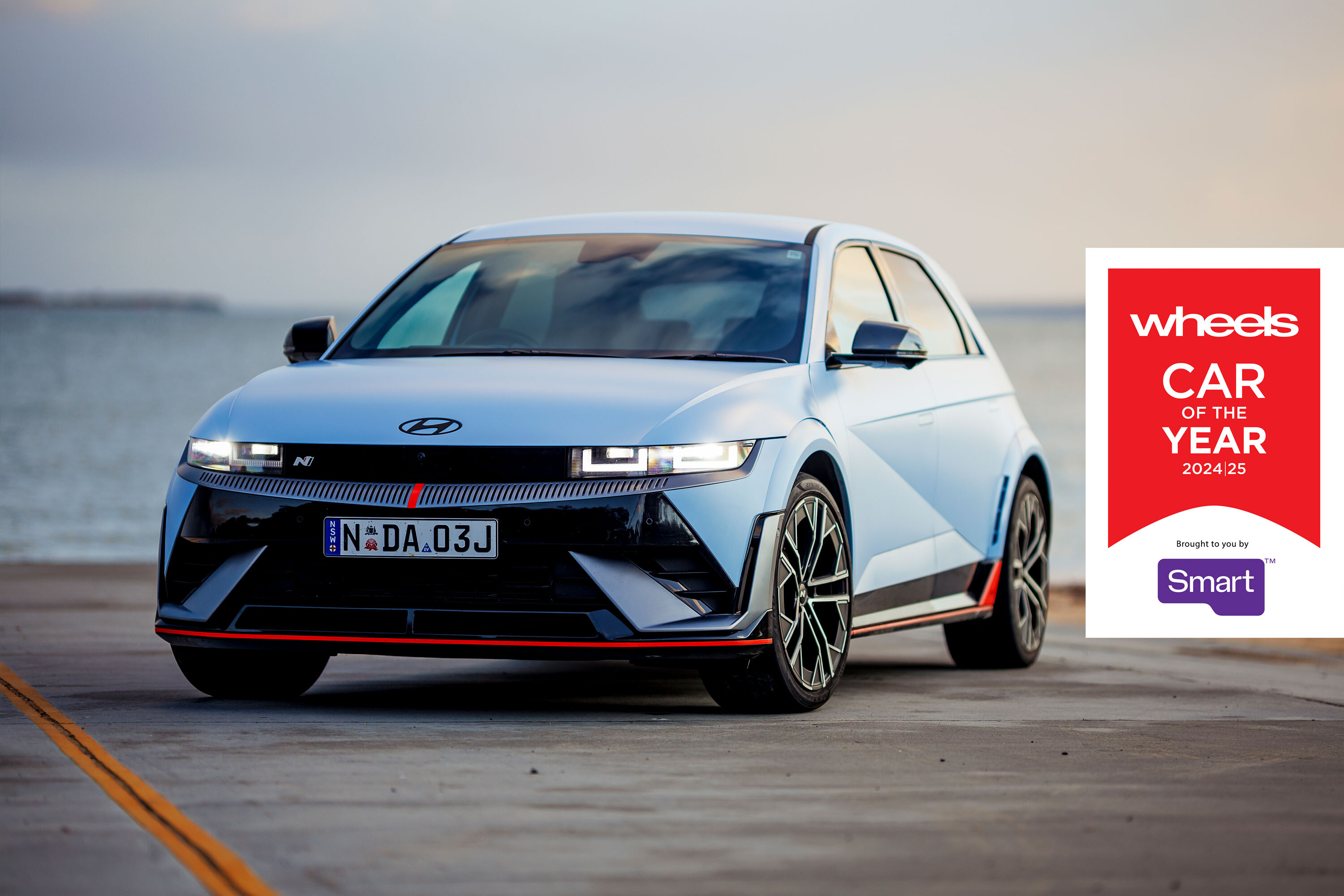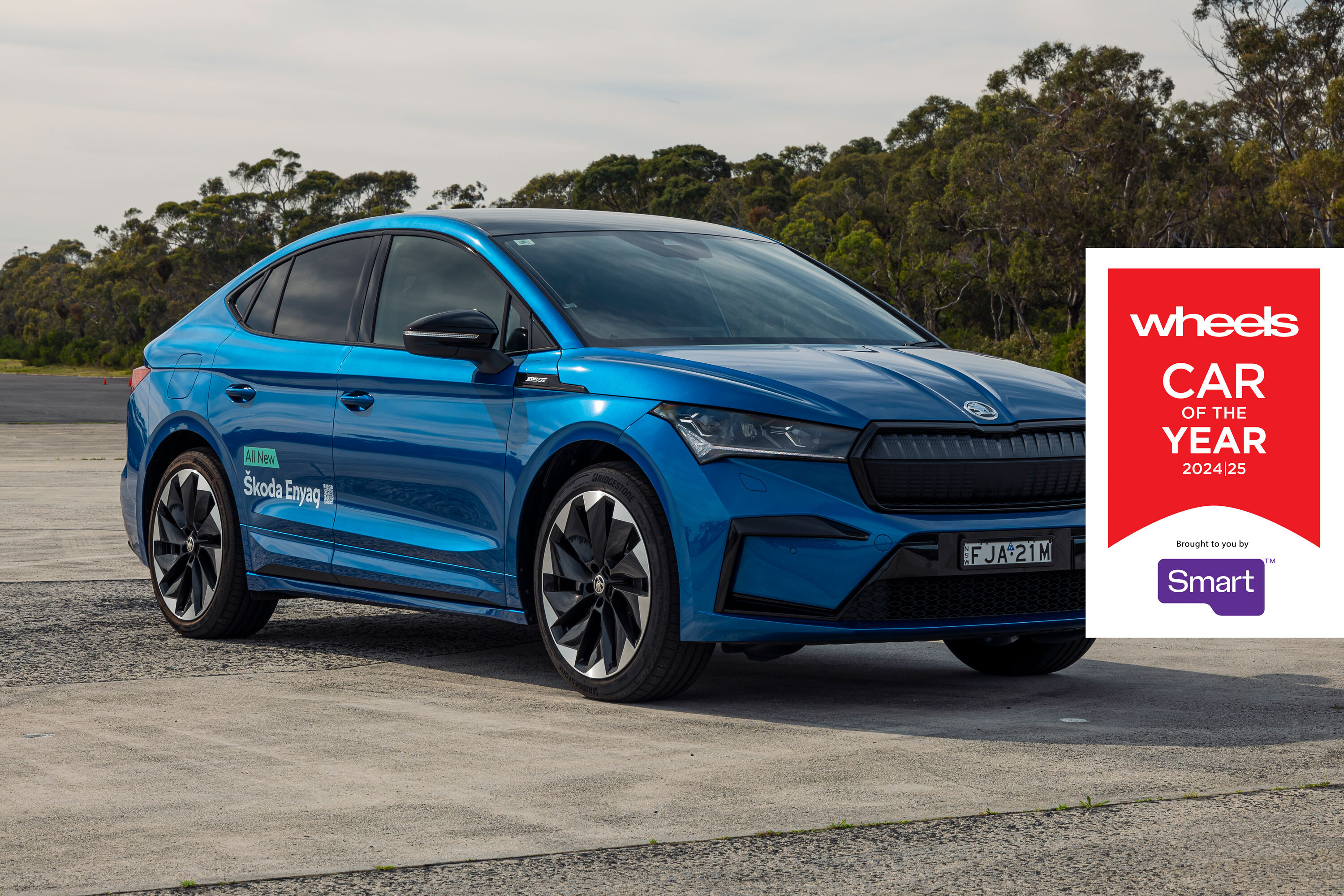The Yaris has grown so sophisticated it sparked a philosophical debate about pricing versus value.
Just in case you missed the big news, the base grade now costs $7000 more than before at $22,130, while the flagship ZR is now nearly $10K heavier on your wallet.
Buyers are already voting with their feet. By the end of 2020, sales had halved. Toyota’s response is that – with Yaris adopting the Corolla’s TNGA platform technologies for dramatic advances between the third and fourth generations – price hikes are unavoidable.
From a COTY perspective, surely this would kill it on value grounds alone? Even a new Volkswagen Polo or Suzuki Swift cost $3K less. Time to dig a little deeper.

Yes, Yaris is now substantially more expensive. Adjusted for inflation, the Ascent Sport costs $3300 more than the then-new third-gen five-door equivalent did in 2011.
Yet, besides being usefully roomier, today’s model brings eight airbags (including a segment-first front-row centre SRS), AEB with pedestrian/cyclist detection, secondary collision braking, adaptive cruise, auto high beam, road-sign recognition, active lane-keep and cornering, a central touchscreen with reverse camera, Apple CarPlay/Android Auto and digital radio. Specify a Polo accordingly and watch its pricing lead go poof!
The reality is, no new car democratises so much safety and technology. That’s three COTY criteria ticked off.
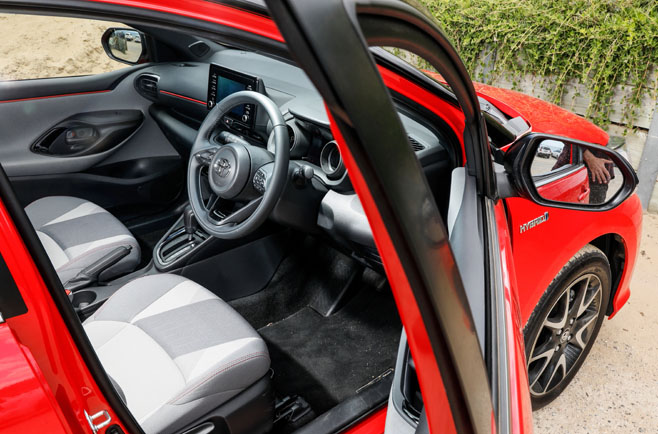
Then there’s efficiency, thanks to the Yaris’s two all-new powertrain choices, both provided by a 1.5-litre three-cylinder naturally aspirated petrol engine, available in 88kW/145Nm (Ascent Sport) or 85kW/120Nm (ZR Hybrid) guises.
Whether via a natty six-speed manual or unobtrusive continuously variable transmission (CVT), this unit is a real cracker, with a willing, unburstable nature to its power delivery that never lets up, resulting in smooth, flexible performance. In Sport mode, the CVT even steps off the line like a normal torque-converter auto, and can achieve a pleasing 4.9L/100km.
Yet the $2000 optional (starting in mid-level SX from $29,020) hybrid alternative manages a spectacular 3.3L/100km, while also ushering in a creamy, muscular, electrified torque boost in the process.
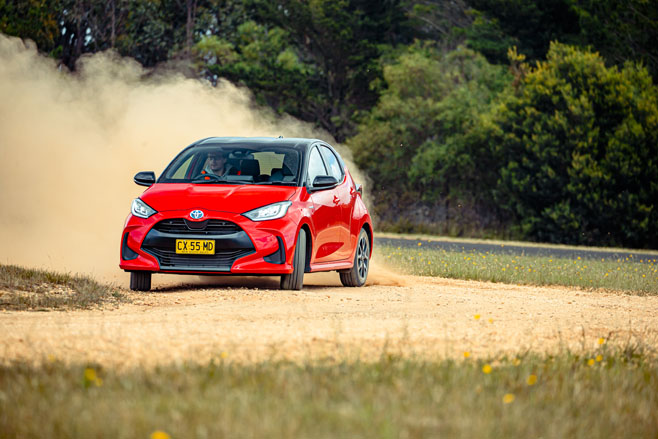
Reliability and durability, long brand strengths, can probably be assumed here, but from a driving perspective, the Yaris/Echo/Starlet lines have fell short at times, especially for refinement.
The good news is that the latest Yaris chassis far exceeds its modest engine outputs. Linear, well-weighted steering makes the most of the agile yet secure handling, resulting in an endlessly chuckable supermini. In sudden-avoidance manoeuvres, there’s a new-found fluency to the chassis, backed up by a decent level of suspension absorption. Finally, there’s something for keener drivers to sink their teeth into.
In contrast, the 55kg-heavier Hybrid isn’t as dynamic, but it is noticeably quieter. Our Ascent Sport sounded hollow (but never tinny) over gravel – but then, at 1050kg, it is light, even by city-car standards. Both are leagues ahead of the noisy old Yaris.
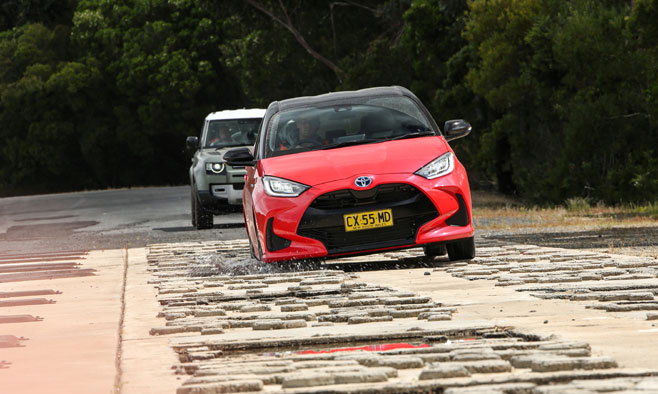
Finally, the smallest Toyota aces functionality, thanks to a comparatively spacious cabin offering comfy (if somewhat too lofty for taller folk) seating, and featuring an attractively styled dash that’s on a par with current Euro alternatives. The instrumentation looks swish, too.
That the boot capacity actually exceeds big-bro Corolla hatchback’s is a bonus, but it’s far from being the class champ here. And while we’re nit-picking, the base hubcaps are disgraceful, rear-seat ambience falls short of the ZR Hybrid’s $32,100 ask, more sound-deadening wouldn’t go astray and the ESC gravel calibration borders on paranoia.
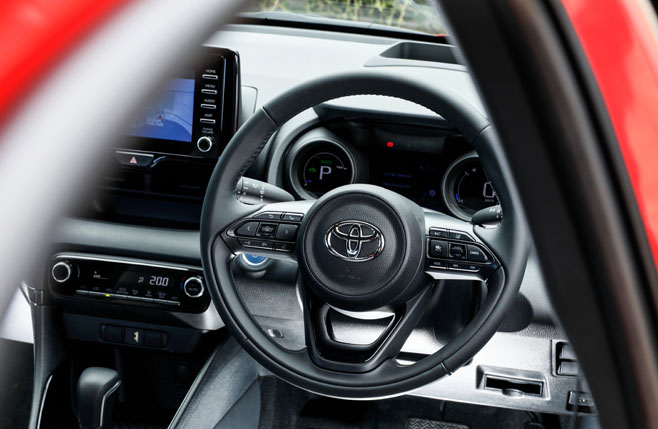
Despite us seeing its intrinsic value, many buyers can’t or won’t, and – feeling betrayed – will instead ignore Toyota’s best-ever light car because of inaccessible pricing.
Perhaps true democratisation can only occur if something’s actually in reach of all, and that’s quite a rare misstep for Australia’s number one carmaker.
Cultivated as it now is, this is why the Yaris cannot quite make it over the line to claim a COTY crown.
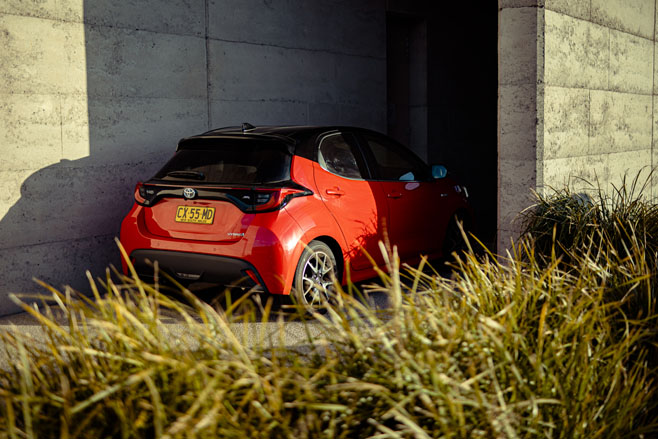
Richard Ferlazzo on the Toyota Yaris’ design
“The regular five-door Yaris line-up sports a funky new look but I wouldn’t call it attractive.
“The overall egg shape is fairly inoffensive but the front face is mostly a huge black grille with twisty bits of body colour surrounding it in an arbitrary manner.
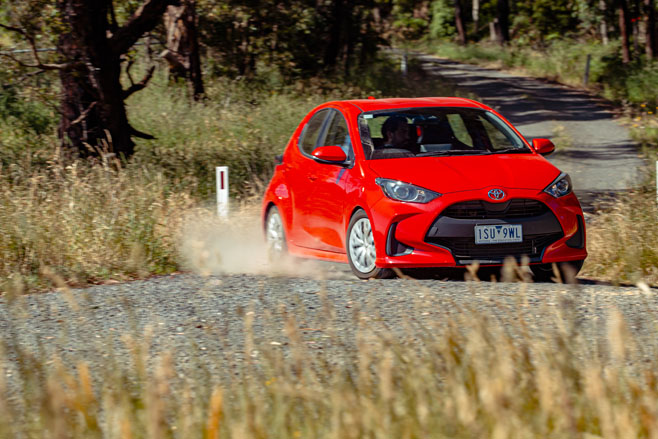
“The rear is more successful with a generous lamp graphic which stretches across its full width.
“Overall, it just seems a bit try-hard and difficult to determine which demographic Toyota is chasing. The styling is youthful but the new price tag is more suited to older buyers looking for an up-spec small car.”

